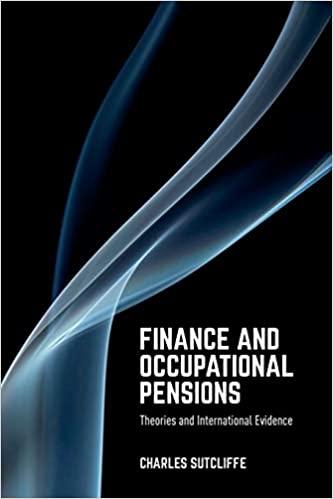Question
1. Suppose you deposit $6,000 into a savings account at the end of each of the next five years. How much money will you have
1. Suppose you deposit $6,000 into a savings account at the end of each of the next five years. How much money will you have at the end of five years if the interest rate is 10%, compounded annually? Assume your starting balance is zero.
2. What is the effective annual rate of 9.2 percent compounded weekly?
3. Given daily compounding, what annual percentage rate produces an effective annual rate of 14 percent?
4. You buy an annuity that will pay you $18,000 a year for 15 years. The payments are paid on the first day of each year. What is the present value of this annuity if the discount rate is 7.6 percent?
5. You will receive annual payments of $500 for each of the next 50 years. The discount rate is 11 percent, compounded annually. What is the difference in the present values if you receive the payments at the beginning of each year rather than at the end of each year?
6. You deposit $75 every month for 5 years, and the payments occur on the first day of each month. Given a stated rate of 11 percent compounded monthly, what is the future value of this annuity?
Step by Step Solution
There are 3 Steps involved in it
Step: 1

Get Instant Access to Expert-Tailored Solutions
See step-by-step solutions with expert insights and AI powered tools for academic success
Step: 2

Step: 3

Ace Your Homework with AI
Get the answers you need in no time with our AI-driven, step-by-step assistance
Get Started


